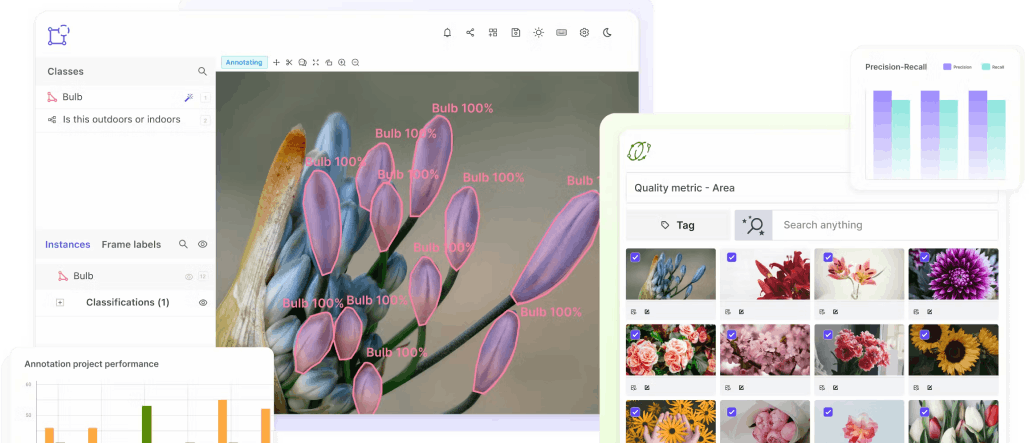Bounding Box
Encord Computer Vision Glossary
A bounding box, also known as a bounding volume or bounding region, is a geometric shape that encloses or surrounds an object or a group of objects in a digital image. The purpose of a bounding box is to define the location and size of an object in a 2D or 3D space, and to enable easy manipulation and analysis of the object.
Bounding boxes in 2D images are commonly represented by rectangles, with the long sides running parallel to the x- and y-axes of the image. The x- and y-axes' minimum and maximum values, which are specified by the coordinates of the rectangle's corners, determine the size of the rectangle. The rectangle's size and center point can also be used to create the enclosing box.
Bounding boxes in 3D images are commonly represented by parallelepipeds (3D rectangles), whose sides are parallel to the image's x, y, and z axes. The coordinates of the parallelepiped's corners, which indicate the minimum and maximum values of the x-, y-, and z-axes, determine its dimensions. The parallelepiped's size and center can also be used to determine the bounding box.

What is a bounding box in computer vision?
Numerous applications, such as computer vision, image processing, and robotics, make use of bounding boxes. Bounding boxes are used in computer vision to identify and categorize items in images and videos. A bounding box can be used, for instance, to identify a person in a picture or to categorize an object in it (such as a car, a chair, etc.).
Bounding boxes are used in image processing to crop, resize, and rotate objects in pictures. A bounding box can be used, for instance, to rotate or crop a picture of a structure or a person's face.
Bounding boxes have several advantages over other methods of defining objects in digital images.
- They are easy to implement and understand.
- Computationally efficient, as they only require the coordinates of the corners or center point and the size of the bounding box.
- Robust, as they can handle objects of different shapes and sizes.
What are the limitations of using bounding boxes?
There are some limitations to using bounding boxes. First, bounding boxes can be sensitive to the orientation and position of the object in the image, which can affect the accuracy of object detection and classification. Second, bounding boxes can be sensitive to noise and clutter in the image, which can affect the accuracy of object detection and classification. Third, bounding boxes can be sensitive to occlusion (i.e., when one object is partially or completely obscured by another object), which can affect the accuracy of object detection and classification.